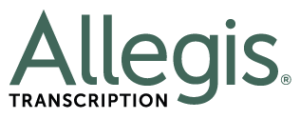General Versus Medical Transcription Jobs: What’s the Difference?
The transcription industry is a wide and varied world. How do you even start to explore your career options?
Why not begin with medical and general transcription, which are two of the most popular options out there?
The career path to becoming a medical transcriptionist is more clearly laid out than for a general transcriptionist. You’ll find numerous medical training programs out there, but far fewer in the general category. Ask several general transcriptionists how they landed in their current job and you’ll probably get a wide variety of responses regarding their career path.
Both career destinations provide excellent opportunities for satisfying work. I’ll provide some basic insight into several of the differences between both career options, as well as some of the pros and cons of each.
First, what does medical transcription involve?
So, what does a medical transcriptionist do? These folks work in both clinical (non-hospital setting) and acute care (hospital setting) roles where transcription services are often required.
To give you an idea of the topics involved in each, clinical work deals with typical ailments on a daily basis, such as common colds, flus, and even routine preventative care. Acute care offers an emergency room backdrop and challenging surgical work, as well as the introduction of new procedures and drugs that might not yet be well documented (yep, that’s code for tough-to-research).
You can further subdivide clinical work and acute care into many different specialties. Think about every ‘ology’ and body system out there—cardiology, immunology, neurology, and the list goes on.
For days.
That sounds like a lot of opportunities to keep you busy as a medical transcriptionist, doesn’t it? But wait, there’s more!
What’s general transcription all about?
So what is this thing called “general transcription,” you ask?
General transcription jobs are often work-from-home positions encompassing practically everything that’s not strictly legal or medical. So it’s quite broad. Industries utilizing general transcriptionists include (but are not limited to):
- Academia
- Business
- Entertainment
- Insurance
It’s easy to see that there are numerous and varied general transcription job opportunities out there for you. And the list is far from complete.
Medical transcriptionist pros and cons
What you really want to know is if the grass is greener on a particular side, right? Honestly, that’s a personal thing—the choice is going to be different for each individual.
If you have a strong interest in the medical field and the money/time to spend on the training, medical transcription might be the thing for you. You’ll be dealing with one-speaker files and better audio quality (usually).
Turnaround requirements are generally tighter for medical transcriptionists. So you will want to consider how much time you need (and want) to complete files. If you’re working on numerous accounts with tons of different specifications, specialties, and doctors–particularly doctors for whom English is a second language—all these factors can slow you down. Working with one doctor who says the same things repeatedly will, of course, be faster and easier.
General transcriptionist pros and cons
If medical lingo and tight turnaround times aren’t your cup of tea, no worries!
Turnaround times are usually longer for general transcription services. The number of speakers, subject matter, and audio quality will depend on the type of general transcription job you have.
From my personal experience, insurance transcription usually involves two-person interviews, and the interview setup is similar regardless of the type of claim involved. Both factors certainly lend themselves to higher production levels.
While you’ll likely find more on-site opportunities as a medical transcriptionist than a general transcriptionist, freelance, work-from-home jobs have largely become the norm for both industries. And whether that’s a good or bad thing largely depends on your personality, which brings me to my next point.
Consider your personality traits
Are you suited for either a general or medical transcription job? Regardless of the transcription flavor, certain personality traits are ideal. If you have a keen eye for detail, are self-motivated, enjoy working alone, are a bit of a perfectionist, can sit for long periods of focused time, and are an intuitive listener, then transcription might be a perfect fit for you.
Conversely, if you abhor repetitive activities or need constant social interaction, transcription is probably not a good choice. Working from home without much supervision means no conversations around the water cooler and a whole lot of personal responsibility for getting the work done.
Do your research and then go for it!
There are several significant similarities and differences to consider when comparing medical and general transcription service jobs. There’s no one-size-fits-all answer.
Be sure to do your research before choosing a career path. Talk to other transcriptionists. Take a look at pay rates for both medical transcription jobs and general transcription jobs.
If you decide the general transcription field interests you, I recommend digging into your options here because there are many. You can transcribe sermons, board meetings, job interviews, and the list goes on. But you’ll usually end up working for a vendor (or finding direct clients) with a specific industry focus. Allegis Transcription focuses almost entirely on insurance transcription. This means transcribing recorded statements, which primarily involve files with two speakers.
So, take a look around, talk to other transcriptionists, and start applying! Any questions? Post in the comments and I’ll do my best to answer them!


